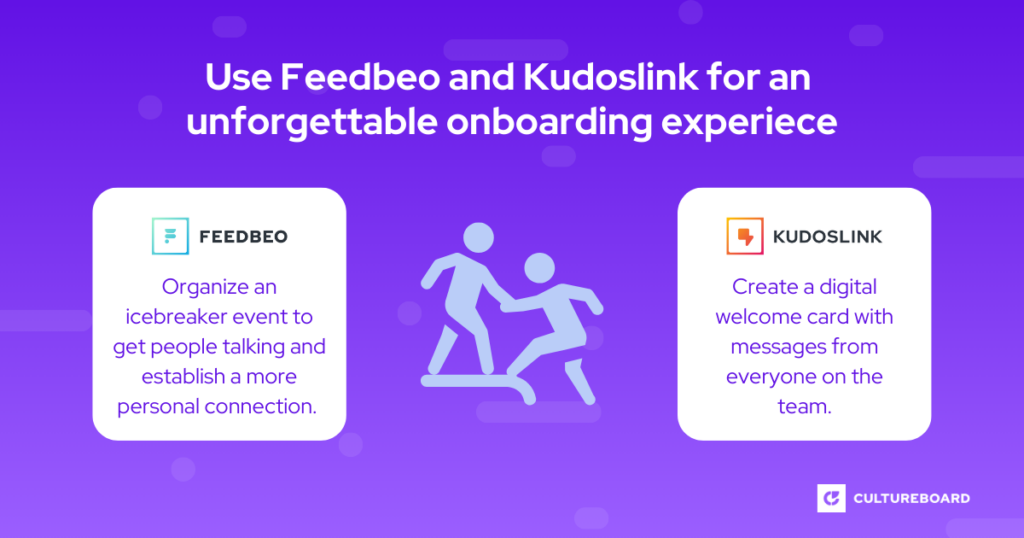Do you remember your first day at work? There’s always so much confusion and a bit of anxiety. Everything is new, you don’t know anyone, you have no idea how anything works and you are worried about messing up on your very first day.
Being a newcomer is a lot. The first few days can be overwhelming with the new information you need to learn. But nowadays, it’s not a walk in the park for the other side, either. A company needs to make a good impression just as much as you do.
If the first thing newbies see is the cracks in the pretty surface, they’re immediately put in the position of a critic instead of an admirer, which is where a company wants them.
The results are immediate second thoughts and telling everyone they know about everything that might have been perceived as red flags. And you know how this kind of things spreads easily.
But what if the company does an amazing job, delivering a perfect onboarding experience that sticks with every newcomer? What if they make them smile and feel welcomed from the moment they walk in? Then you’ve got an employee who’s not going anywhere for a while and will praise you to everyone they know.
Onboarding isn’t just about handing over a new laptop and pointing out the coffee machine. It’s also about setting expectations, clearly presenting your vision, and welcoming someone via perfectly defined steps mixed with the company’s unique personality.
So to all managers out there, here are some tips to take onboarding to new heights.

Checklist for creating an unforgettable first day
1. Do an office tour
If you’re working from the office, start by showing them around while sharing some funny stories. Fun facts are a great way to introduce new colleagues, besides giving newcomers topics to bring up during that first kitchen small talk.
2. Adjust the onboarding process to work in remote settings
Nowadays, more companies are going fully remote. This offers a lot more flexibility, but can also create a few problems when hiring new employees if the onboarding process is not thought out to work in a virtual environment.
To start strong, you can make a connection with the newcomer even before they start. This means you should send them all the IT materials and hardware, as well as company goodies before they start, so they’re good to go on their official first day.
Once they start, you can choose someone on the team to work as a mentor and pay closer attention to the new hire. This person can guide them to the work methods and tools, explaining the communication channels, software you use, security measures, and other company guidelines.
One great way to also facilitate everyone getting to know each other is creating specific moments during the week for bonding. On the newcomer’s first Friday, you can organize a call to present everyone on the team in a more relaxed way and get them talking about subjects other than work. You can use Feedbeo and create a live polls session to break the ice and get everyone closer. Create a set of polls that help people get more personal.
3. Introduce the team
Have a set time for the first intro to make sure no one on the team is too preoccupied or distracted. If you can, grab a bite to eat away from the office to create a less professional atmosphere and put the new team member more at ease.
If you’re remote, create a specific time slot on people’s calendars so they know that time is reserved to talk to the new person.
4. Focus on the little things
Which kitchen has matcha and who prefers it to coffee? Why doesn’t the light switch in the bathroom work unless you wave your arms? Where’s a good place to catch a view of the sunset?
Give glimpses of your culture and its history; share stories and fun facts; tell the new person how it was for you and your first few days at the company. It’ll feel like home a lot faster.
5. Discuss the company and the person’s role
Talk about the company vision, principles, or whatever the company uses as a guiding star to make sure everything’s as clear. Why does the team prioritize certain goals? Where are these goals headed? And how does the new person fit in?
Define expectations and emphasize the importance of the newcomer’s role in the big picture. Discuss how a typical day and week in that role will look and what’s expected of the person. Give a margin for the person to ask questions and suggest things.
6. Organize a document or workspace with the company’s basic information
One easy way to try and help out the new person is to create an institutional presentation that gives a quick overview of the company. Nothing too big that can be overwhelming or takes too long to read. Something simple and to the point.
Here are some things that could be featured there:
- Mission, vision, and goals of the company.
- Why and when was the company created?
- An overview of how many employees, headquarters, stores, etc. the company has.
- A clear layout of the company departments.
- A brief description of the company’s products and services.
- An introduction of the type of clients / Ideal Customer Profile.
- Channels of communication where the company is featured.
- Important contact information the new person should have (for example, contacts to the HR department).
All of this can be adjusted to your company’s needs.
7. Create a welcome board with unlimited information
Using KudosLink is a great way to, not only give the newcomer more work-related details, but also to let more people participate in a welcome message, with everyone doing it their own way — whether that’s through a gif, meme, simple text, video, or photo. Just create a KudosLink board, share it with everyone at the company, and let them welcome their new colleague in their own way.
Conclusion
Company culture is about more than just the serious information and processes and we know it’s tricky to fit every bit of crucial info and every inside joke into one day.
With that being said, with these tips and tools such as Feedbeo and Kudoslink, you can make this process a lot easier, smoother, and more enjoyable for the new hire and everyone on the team.
